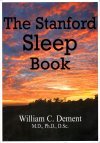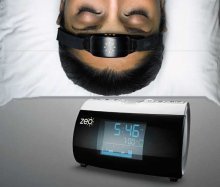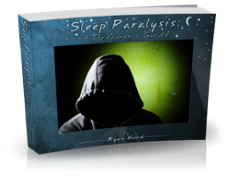
| Connect & Subscribe |
Sleep Debt And Sleep Disorders: What YOU Should Know and Why
An Outreach Project by Hallie Ivester | Return To Outreach Projects 2010
Millions of people suffer and die from treatable sleep related illnesses, eighty-seven percent of all sleep related car crashes are fatal, and half of all adults don't get enough sleep (Stanford Sleep Book).
As though that isn't enough, some of the world's major catastrophic accidents, such as the Exxon Valdez oil spill, were the result of sleep deprivation. And yet, sleep education is not a priority in high school or college. Why? Because America, and much of the world, remains ignorant to the effects of sleep debt and sleep disorders. Luckily, with some basic information, it is easy to learn how to maximize your daytime functioning, to prevent sleep crisis, identify symptoms of possible sleep disorders and, most importantly, educate others.
The first fundamental concept necessary to understand is sleep debt, which can lead to extreme fatigue, unintended sleep episodes, and impairment of cognitive processes (SSB, p. 105). Sleep debt is, in the words of Dr. Dement, "the accumulated amount of sleep less than the daily amount needed" (SSB, p. 48) and means that all lost sleep accumulates as a debt! Unfortunately, this debt doesn't dissipate, suggesting that it can only be repaid through extra sleep. This may explain why, for example, after a night of eight or even ten hours of sleep, you may feel tired the next daybecause your debt still isn't repaid. If your sleep debt is large, trying to "catch up on sleep" won't work for one night (SSB, p. 69).
Not sure how to measure your debt? First determine how much sleep your body requires by following two steps advised by Dr. Dement: 1) Create and maintain a sleep schedule for several weeks depending on how much sleep you think you need. 2) Take very careful note of your daytime sleepiness (SSB, p. 130). If you still feel quite tired during the day, extend your sleep time by thirty to sixty minutes (SSB, p. 130). If you feel extremely alert and actually have trouble falling asleep or awaken early, then perhaps your individual sleep requirement is less than you thought (SSB, p. 130). Repeat this procedure of slightly adjusting your schedule until you determine how much sleep is right for you. Then, depending on your sleep requirement, you can do the math. If you need nine hours, but only get seven hours each night for a week, than your sleep debt would be fourteen hours!
It is also important to be aware of clock-dependent alerting and sleep homeostasis because they tell us when people are most likely to fall asleep during the day. To make it simple, sleep homeostasis is always active and is meant to "induce and maintain sleep" (SSB, p. 90). Clock-dependent alerting, on the other hand, helps us to remain awake and is active twice during the day: in the morning and again in mid-to-late afternoon (SSB, p. 93). It opposes sleep debt by fostering periods of peak performance and high energy. Clock-dependent alerting is therefore the reason why you may feel more alert before lunch and also between 2:30pm and 9pm, despite the fact that you have not received extra sleep (SSB, p. 93).
Understanding sleep debt, your personal sleep requirement and clock-dependent alerting is extremely important because sleep loss can negatively affect reaction time, mood, motivation, self-control, memory and even creativity (SSB, p. 151). Most importantly, though, it can cause crisis that more often than not result in death. While lowering your sleep debt and making sure to get enough sleep are the best ways to prevent such crisis, there are other ways to cope with these emergency situations. The first, and absolutely most important thing to know is that DROWSINESS IS RED ALERT. This is by far the best warning sign to get off the road or ask for help. It means that if you are driving and your eyes feel heavy and you can't focus, pull over. If there is nowhere to sleep for the night, drink coffee and then take a nap. This will reduce sleep inertia and may give you extra energy (SSB, p. 169).
Thankfully, though, there are ways to prevent the situation from becoming so dire. For one, plan ahead. As Dr. Dement quotes, "decide when, how, and where you will get what sleep" (SSB, p. 159) and keep your sleep debt low. Secondly, nap! Although many people associate napping with being lazy and other negative qualities, it is actually a great way to reduce sleep debt and reenergize yourself. All of these sleep crisis can be prevented if people are safe and smart, remembering that a large sleep debt will win over loud music and rolled down windows.
In addition to sleep debt and sleep crisis, it is vitally important to understand sleep disorders, which can be a problem at every age and which can worsen other illnesses such as obesity (SSB, p. 297). Four common symptoms of sleep disorders are unusual daytime tiredness, insomnia, vigorous or violent behavior during sleep and habitual loud snoring (SSB, p. 285). One specific disorder that is especially important to recognize is Obstructive Sleep Apnea as it is the most prevalent and serious illness in America (Dement 2/15). It is present in twenty-four percent of adult males and nine percent of females (Dement, 2/15), and is defined as cessation of breathing for ten or more seconds during sleep because of throat closure (SSB, p. 438). If you, or a friend, has difficulty breathing at night, makes unusually loud noises, or feels fatigued during the day make an appointment at a sleep disorders clinic because it might save a life!
In conclusion, knowledge about sleep and its effects urgently need to be spread. People should really care about this topic becauseeven with just some understanding of sleepinjuries and deaths can be prevented, workforce productivity can increase, quality of life can be enhanced and students' performance in school can improve (Dement, 2/15). So, with your knowledge now, help to spread the word and educate others! And remember drowsiness is red alert!
Works Cited: Dement, William. The Stanford Sleep Book. Stanford: William Dement, 2002. Dement, William. Class Lectures. January-February, 2010.
Return To Outreach Projects 2010
Go from Sleep Debt and Sleep Disorders to Important Info on Sleep Debt
About This Site
Welcome! This site is continuously being created by students of Dr. William C. Dement's Sleep And Dreams course at Stanford University.
We made this site as a call to action for people all over the world to live healthier, happier, safer, and more productive lives by learning about their own sleep. We have faith that reading the information provided on this site will motivate you to be smart about your sleep deprivation and strategic about your alertness in order to live life to your fullest, most energetic potential.
In fact, we challenge you to do so! What do you say, are you up for the challenge?
Interviews With Sleep Specialists: Insights Into the Worlds of Sleep Medicine & Sleep Business
America's Most Dangerous Disorder: What Is Sleep Apnea Doing To Your Sleep?
Sleep Debt: How Much More Will You Achieve When You Reduce Yours?
The Stages Of Sleep: The Journey Through The Night
Delayed Sleep Phase: You Want To Sleep But You're Not Tired Yet
Paralyzed at Night: Is Sleep Paralysis Normal?
Sleep In Words: Smart, Strange, and Funny Quotes About Sleep
Sleep Disorders In Children: What's Keeping Your Child From A Full Night's Rest?
Attacks of Pavor Nocturnus (a.k.a. Sleep Terrors, Night Terrors, or Incubus Attacks)
The Stanford Sleep Book
Dr. Dement's pioneering textbook has been the core text for Sleep and Dreams since 1980, but it has just recently been made available to the wider public for the first time.
In it you'll find a more detailed account of the most important things you need to know about sleep, alertness, dreams, and sleep disorders. Studies, statistics, plus plenty of Dr. Dement's classic anecdotes painting the history of sleep medicine.
Preface | Intro | Contents | Get A Copy
More Sleep Resources
The Zeo
A revolution in personal sleep tracking, the Zeo is a wireless headband that transmits your brainwaves in realtime to a dock (pictured here) or your smartphone. The result? You can wake up and see exactly what stages of sleep you were in during the night! Unprecedented personalized sleep knowledge.
Sleep Paralysis: A Dreamer's Guide
Ever woken up paralyzed? A surprising number of us have, believe it or not. But few know the actual causes of this phenomenon, and fewer still how to exert control over it. Dream researcher and sleep paralysis expert Ryan Hurd shares breakthrough insights into how to do just that.
Important Disclaimer
Please Note:
The information found on this page and throughout this site is intended for general information purposes only. While it may prove useful and empowering, it is NOT intended as a substitute for the expertise and judgments of healthcare practitioners.
For more info, see our
Terms of Use.









